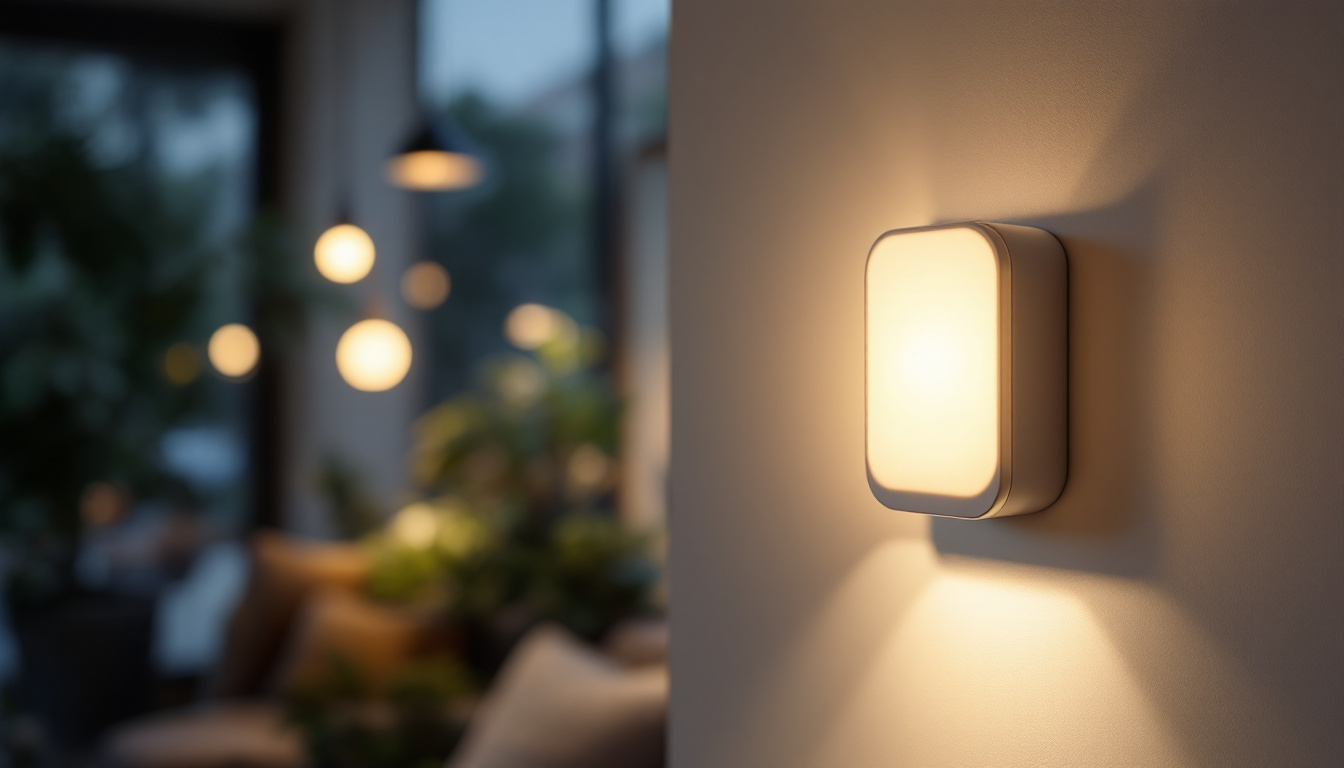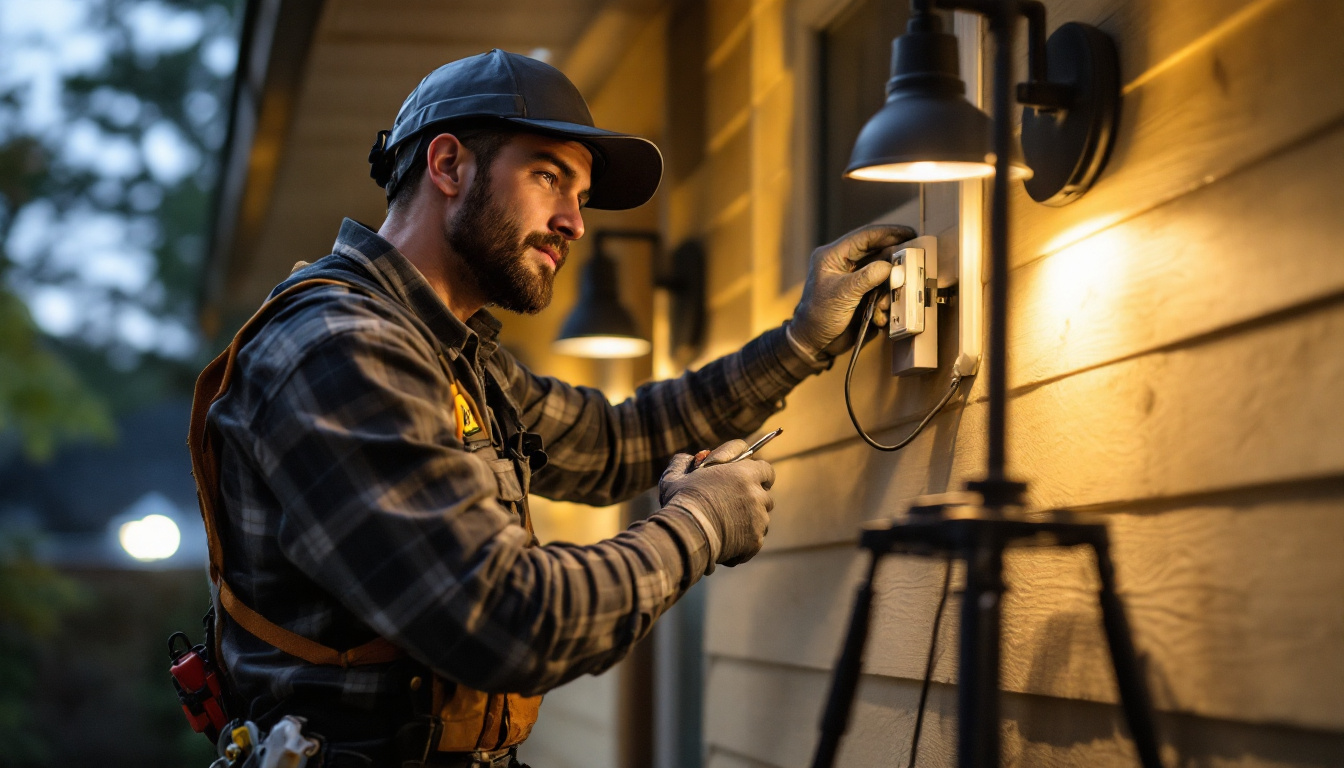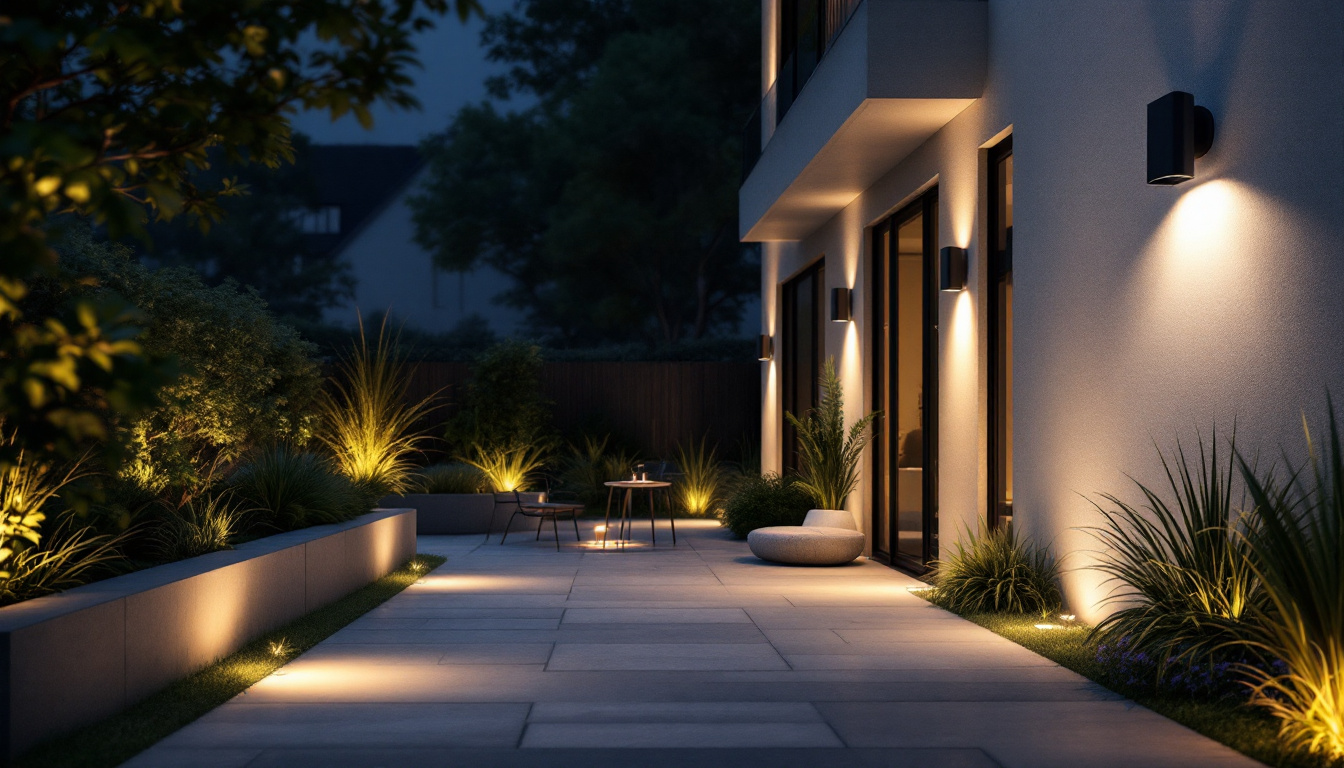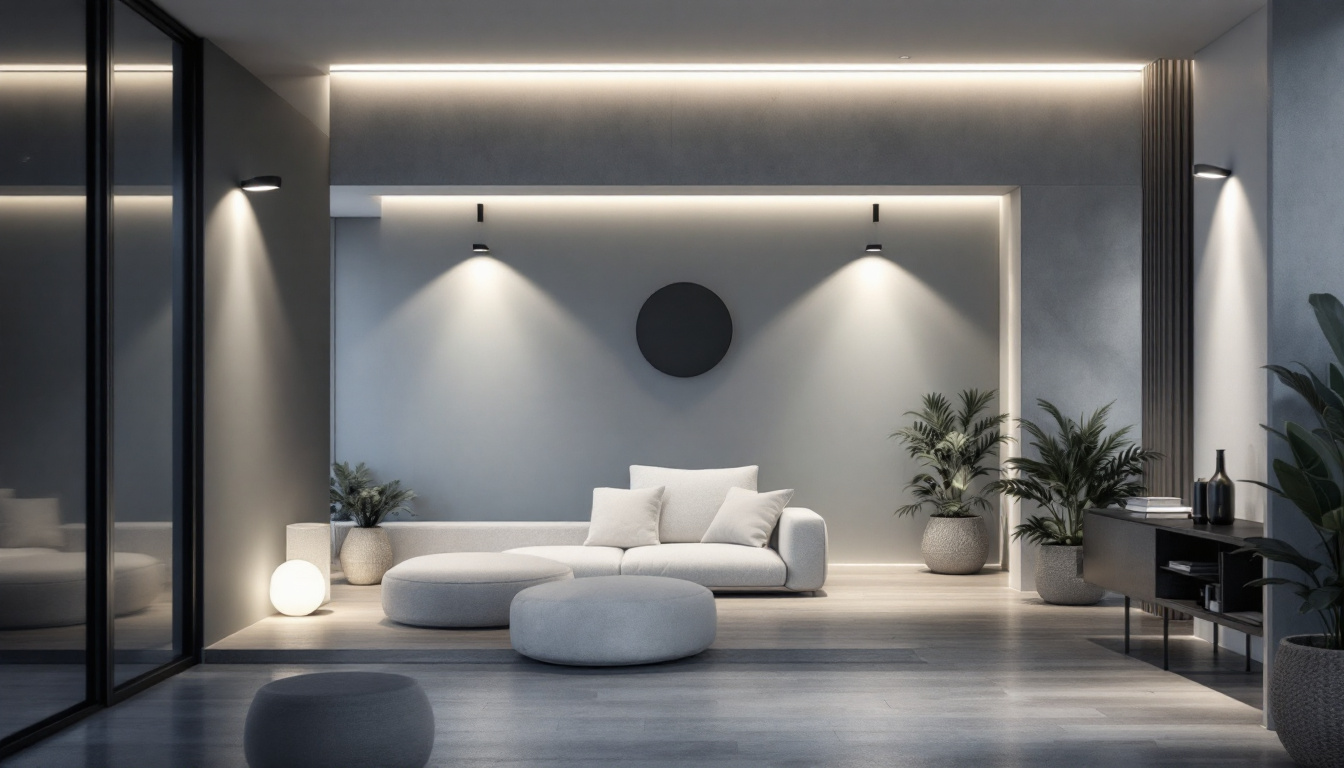

In the ever-evolving world of lighting technology, light sensors have emerged as a pivotal tool for enhancing energy efficiency and improving overall lighting solutions. For lighting contractors, understanding how to effectively implement these sensors can lead to significant benefits, not only for their projects but also for their clients. This article delves into the various types of light sensors, their applications, and how they can be leveraged to create smarter and more sustainable lighting solutions.
Light sensors are devices that detect the presence and intensity of light in an environment. They can be used to automate lighting systems, adjusting brightness based on ambient light levels. This technology is not only beneficial for energy conservation but also enhances the user experience by providing optimal lighting conditions.
There are several types of light sensors available, each designed for specific applications. The most common types include:
Light sensors operate by converting light energy into electrical signals. When light levels change, the sensor sends a signal to the lighting control system, which then adjusts the lighting accordingly. This process can be instantaneous, allowing for real-time adjustments that enhance both comfort and efficiency.
For instance, in a commercial setting, an ambient light sensor may detect increased daylight entering through windows and dim the artificial lights accordingly. This not only saves energy but also creates a more pleasant environment for occupants.
Moreover, light sensors play a crucial role in smart home technology. By integrating these sensors with home automation systems, users can create personalized lighting scenarios that adapt to their daily routines. For example, a light sensor can trigger soft lighting in the evening to promote relaxation, while brighter lights can be activated in the morning to help wake inhabitants gently. This level of customization not only improves comfort but also contributes to a more energy-efficient household.
In addition to residential and commercial applications, light sensors are increasingly being utilized in outdoor environments, such as street lighting and public parks. By using photocells in these settings, municipalities can ensure that lights are only on when needed, significantly reducing energy costs and minimizing light pollution. This is particularly important in urban areas where excessive artificial light can disrupt local wildlife and impact the natural ecosystem. As technology continues to evolve, the potential for innovative applications of light sensors seems limitless, paving the way for smarter, more sustainable living spaces.
The integration of light sensors into lighting systems offers numerous advantages. From energy savings to enhanced user experience, the benefits are compelling.
One of the most significant benefits of light sensors is their ability to reduce energy consumption. By automatically adjusting lighting based on ambient light levels, these sensors can significantly lower electricity bills. In commercial buildings, where lighting can account for a substantial portion of energy use, this can lead to considerable savings.
Moreover, many municipalities and organizations offer incentives for implementing energy-efficient technologies, making the initial investment in light sensors even more appealing for contractors and clients alike.
Lighting plays a crucial role in creating a comfortable environment. Overly bright or dim lighting can lead to discomfort and decreased productivity. Light sensors help maintain optimal lighting levels, adjusting to the needs of the space and its occupants.
In residential settings, for example, ambient light sensors can ensure that living spaces are well-lit without being harsh, creating a more inviting atmosphere. This attention to detail can enhance client satisfaction and lead to repeat business for contractors.
Light sensors can be employed in various settings, from residential homes to large commercial buildings. Understanding the specific applications can help contractors recommend the best solutions for their clients.
In residential environments, light sensors can be used to automate outdoor lighting, ensuring that pathways and entrances are illuminated when needed. Photocells can turn on porch lights at dusk and off at dawn, providing safety and convenience for homeowners.
Additionally, indoor ambient light sensors can be integrated into smart home systems, allowing homeowners to control lighting through mobile apps or voice commands. This level of automation not only enhances comfort but also adds a modern touch to any home.
In commercial settings, the use of light sensors can lead to significant operational efficiencies. For example, in office buildings, motion sensors can automatically turn off lights in unoccupied rooms, reducing energy waste. Similarly, ambient light sensors can adjust the lighting in open-plan offices based on the amount of natural light entering the space.
Retail environments also benefit from light sensors. By maintaining optimal lighting levels, retailers can create an inviting atmosphere that encourages customers to spend more time in their stores. This can lead to increased sales and a better overall shopping experience.
For lighting contractors, successfully implementing light sensors in projects requires careful planning and consideration. Here are some key steps to ensure effective integration.
Before selecting light sensors for a project, it is essential to assess the specific needs of the client. Understanding the space, its usage patterns, and the desired outcomes will guide the selection process. For instance, a residential client may prioritize comfort and aesthetics, while a commercial client may focus on energy savings and operational efficiency.
Conducting a thorough site assessment can also help identify the best locations for sensor placement, ensuring optimal performance and effectiveness. This proactive approach can set the stage for a successful installation.
With various types of light sensors available, choosing the right ones for the project is crucial. Factors to consider include the type of lighting system in use, the specific application, and the environment. For example, outdoor sensors need to be weather-resistant, while indoor sensors should be sensitive enough to detect subtle changes in light levels.
Consulting with manufacturers or suppliers can provide valuable insights into the latest technologies and innovations in light sensors, helping contractors make informed decisions.
Proper installation and calibration of light sensors are vital for achieving desired results. Following manufacturer guidelines and best practices ensures that sensors function correctly and efficiently. This may involve adjusting sensitivity settings, testing response times, and ensuring that sensors are positioned to accurately detect light levels.
Training staff on the operation and maintenance of light sensors can also enhance long-term performance. Providing clients with clear instructions on how to manage their lighting systems will lead to greater satisfaction and fewer service calls.
While light sensors offer numerous benefits, there are also challenges and considerations that contractors must address. Understanding these can help mitigate potential issues and ensure successful implementation.
One challenge with light sensors is their potential for false readings. For example, if a sensor is placed near a reflective surface, it may detect light levels inaccurately, leading to improper adjustments. Contractors must be mindful of the environment and avoid placing sensors in areas where they may be affected by external light sources.
Additionally, the technology behind light sensors is continually evolving. Staying informed about the latest advancements can help contractors select the most reliable and effective solutions for their clients.
Educating clients about the benefits and operation of light sensors is essential. Some clients may be hesitant to adopt new technologies due to a lack of understanding or concerns about complexity. Providing clear explanations and demonstrations can alleviate these concerns and encourage clients to embrace smart lighting solutions.
Moreover, highlighting the long-term cost savings and environmental benefits can further persuade clients to invest in light sensor technology.
The future of light sensors is promising, with advancements in technology paving the way for even more innovative applications. As smart home and building technologies continue to gain popularity, the integration of light sensors will become increasingly important.
As part of the broader trend toward smart lighting solutions, light sensors will play a crucial role in creating interconnected systems. These systems can communicate with other smart devices, allowing for enhanced control and automation. For instance, light sensors can work in tandem with occupancy sensors to create a fully automated lighting system that adjusts based on both light levels and room occupancy.
This level of integration not only improves energy efficiency but also enhances the overall user experience, making spaces more adaptable to individual needs.
With growing concerns about energy consumption and environmental impact, the demand for sustainable lighting solutions will continue to rise. Light sensors will be at the forefront of this movement, helping to reduce energy waste and promote responsible usage.
Contractors who embrace this technology will not only meet client demands but also position themselves as leaders in the industry, contributing to a more sustainable future.
Light sensors represent a significant advancement in lighting technology, offering numerous benefits for both contractors and clients. By understanding the various types of sensors, their applications, and the best practices for implementation, lighting contractors can leverage this technology to create smarter, more efficient lighting solutions.
As the industry continues to evolve, staying informed about the latest trends and advancements will be crucial for success. Embracing light sensors not only enhances project outcomes but also contributes to a more sustainable future in lighting.
Ready to elevate your lighting solutions with the advanced technology of light sensors? At LumenWholesale, we provide lighting contractors with the highest quality, spec-grade lighting products at prices that can’t be beaten. Say goodbye to local distributor markups and hello to our extensive selection that meets rigorous industry standards. With free shipping on bulk orders, you can ensure your projects shine brighter while keeping costs down. Don’t miss out on the perfect combination of quality, affordability, and convenience. Wholesale Lighting at the Best Value is just a click away. Light up your next project with LumenWholesale.

Discover the must-know benefits of using an exterior 2 gang extender for lighting projects.

Discover innovative hacks for smart lighting contractors to enhance their projects with exterior LED light fixtures.

Explore how Securitying Lights are revolutionizing modern lighting solutions with advanced technology, energy efficiency, and enhanced safety features.

Discover the essential insights lighting contractors need to know about outdoor light fixtures.
Get notified when NEW deals are released.
Optimize your budget with wholesale discounts.
Only top-quality, specification-grade lighting products.
No additional costs at checkout - what you see is what you pay.
We understand the unique needs of contractors.